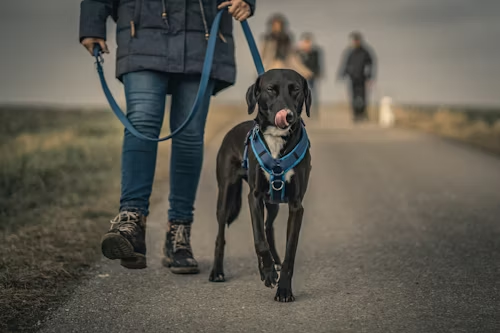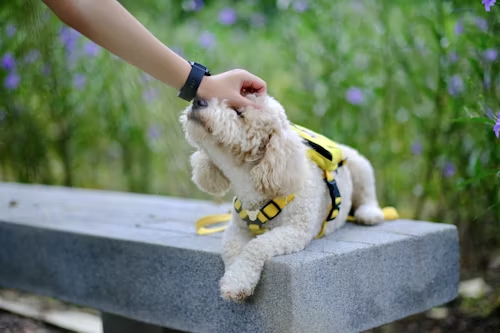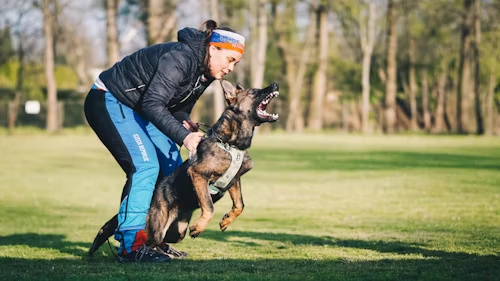If you’ve ever found yourself struggling with a disobedient puppy, a barking dog, or simply wondering whether professional training is worth it, you’re not alone. One of the first questions most dog owners ask is, “How much does dog training cost?”
The truth is that prices can vary widely, depending on the kind of training, where you live, and what your dog needs. But understanding what goes into those costs can help you make smart, informed choices, and ultimately, save both money and frustration.
This guide walks you through the average cost of dog training in 2025, explains the factors that influence pricing, and helps you decide which option is right for you and your dog.
Why Dog Training Is Worth Every Penny
Let’s start with something important: dog training isn’t just about teaching commands like “sit” or “stay.” It’s about communication.
A well-trained dog listens because it understands what you’re asking. Training builds confidence, prevents behavioral problems, and strengthens the bond between you and your pet. It’s one of the most valuable investments you can make in your dog’s life, and your own peace of mind.
Training can also help with issues like leash pulling, jumping on guests, separation anxiety, or even aggression. In many cases, professional guidance early on prevents more serious and expensive problems later.
Average Cost of Dog Training in 2025
As of 2025, the average cost of professional dog training ranges from $40 to $200 per session, depending on the service and location. Here’s a breakdown of typical price ranges:
| Type of Training | Average Cost per Session | Total Cost Range |
|---|---|---|
| Group obedience classes | $40 – $80 | $200 – $600 for a full course |
| Private in-home sessions | $80 – $150 | $400 – $1,000 for multiple sessions |
| Board-and-train programs | $1,000 – $3,000 | For a 2–4 week program |
| Puppy training packages | $150 – $400 | For 4–6 sessions |
| Behavior modification | $100 – $200 | Per session or package |
| Online training courses | $30 – $100 | Depending on trainer and course length |
Keep in mind that prices tend to be higher in metropolitan areas compared to small towns or rural regions. A certified trainer in New York City, for example, will often charge more than one in a smaller Midwestern town.
Types of Dog Training and What They Cost

Let’s look more closely at the most common forms of dog training and what you can expect from each.
1. Group Training Classes
Group dog training classes are one of the most common and cost-effective ways to teach your dog basic manners and obedience. These sessions are usually held in pet stores, local community centers, or professional training facilities, and typically include several dogs working with one instructor.
The structured environment helps dogs learn to focus despite distractions, which is especially beneficial for puppies or friendly adult dogs who need socialization. Group classes usually cover foundational commands such as sit, stay, down, come, and leash walking, and they give owners a chance to practice under real-world conditions.
Prices generally range from $40 to $80 per class, or about $200 to $600 for a complete multi-week program. While this option is affordable and highly educational, it may not be ideal for dogs with behavioral issues like fear, reactivity, or aggression, since the trainer’s attention is divided among several participants.
2. Private One-on-One Training
Private dog training sessions provide a personalized experience designed specifically for your dog’s temperament, behavior, and your individual goals.
These lessons can take place at your home, in a trainer’s facility, or even outdoors in familiar environments where your dog needs improvement. During private sessions, the trainer focuses solely on you and your pet, allowing for faster progress and custom-tailored strategies.
This approach is especially valuable for addressing complex behaviors such as separation anxiety, leash reactivity, or aggression, or for fine-tuning obedience skills beyond what’s covered in group classes.
The cost typically ranges from $80 to $150 per session, though many trainers offer discounted packages for multiple visits. The biggest advantage of private training is the personal attention and hands-on coaching you receive, helping you become more confident and consistent as your dog’s leader.
3. Board-and-Train Programs
Board-and-train programs are the most intensive form of dog training, offering full-time instruction from a professional trainer. In these programs, your dog stays at a training facility or with the trainer for two to four weeks and receives daily lessons focused on obedience, behavior correction, and consistent reinforcement.
This option is ideal for owners with limited time or for dogs that require significant behavioral modification, such as severe leash pulling, aggression, or anxiety. The cost of board-and-train programs typically ranges from $1,000 to $3,000 depending on the trainer’s credentials, program length, and your dog’s specific needs. While results can be impressive, it’s important for owners to understand that follow-up work at home is essential.
Dogs can learn quickly in a structured environment, but without continued practice and consistency from the owner, progress may fade over time.
4. Puppy Training
Puppy training is one of the smartest investments you can make in your dog’s future. These classes are designed to introduce young dogs, typically between eight and sixteen weeks old, to basic obedience commands, socialization with people and other dogs, and good household manners.
Early training helps prevent unwanted behaviors like biting, jumping, and house soiling before they become habits. Classes often include crate training, potty training, leash walking, and gentle exposure to new sights and sounds.
The cost for a complete puppy program usually falls between $150 and $400 for a series of four to six sessions. Starting training early not only sets your puppy up for long-term success but also makes future obedience work much easier. Puppies are like sponges; they learn rapidly, and structured, positive reinforcement during this stage helps shape a confident, well-behaved adult dog.
5. Online Dog Training
Online dog training has become increasingly popular in recent years, offering flexibility and accessibility for busy pet owners. These programs are often delivered through live video consultations, interactive online platforms, or pre-recorded lessons that you can follow at your own pace.
Virtual training is ideal for teaching basic obedience skills, solving minor behavior issues, or getting expert advice from a professional trainer anywhere in the world. Costs typically range from $30 to $100 depending on the trainer’s expertise, the length of the program, and the level of personalized support included.
Online training works best for owners who are committed to consistent practice and self-guided learning. However, for serious behavioral challenges such as aggression or anxiety, in-person training remains the more effective choice. Still, for many families, online programs provide a convenient and affordable way to strengthen their bond with their dog while learning proven techniques from home.
What Determines Dog Training Prices
There’s no universal price tag for dog training because several factors influence how much you’ll pay:
- Trainer’s Experience and Credentials: Certified professionals with credentials from organizations like the Association of Professional Dog Trainers (APDT) or the Certification Council for Professional Dog Trainers (CCPDT) often charge more, but their expertise can lead to faster results.
- Location: Expect to pay more in major cities due to higher operating costs and demand.
- Type of Training: Basic obedience costs less than advanced skills like service dog preparation or aggression management.
- Behavioral Complexity: Dogs with anxiety, reactivity, or aggression typically need more time and specialized training.
- Duration and Frequency: Single sessions may cost more per hour, while multi-session packages often provide a discount.
How to Choose the Right Dog Trainer
Finding the right trainer can make all the difference in your dog’s success. Look for someone who not only understands dog behavior but also communicates well with people. Here are a few key points to consider:
- Certification and Education: Trainers certified through APDT, IAABC, or CCPDT have met professional standards and follow ethical practices.
- Training Philosophy: Always ask what methods are used. Positive reinforcement and reward-based techniques are proven to be effective and humane.
- References and Reviews: Ask for client testimonials or read online reviews to learn about others’ experiences.
- Transparency: A good trainer explains their process clearly and gives you a written training plan.
- Observation: If possible, watch a class before enrolling to see how dogs respond and how the trainer interacts with owners.
How to Save Money on Dog Training
You don’t have to break the bank to get quality training. Here are a few ways to keep costs manageable:
- Choose group classes for basic obedience instead of private lessons.
- Ask trainers about package discounts for booking multiple sessions.
- Look into local animal shelters or humane societies, which sometimes offer affordable community classes.
- Practice daily at home between sessions to reinforce learning and shorten training time.
- Consider online training programs for foundational skills before moving to in-person sessions.
Common Mistakes That Make Training More Expensive
Many owners unintentionally waste money by making simple mistakes that slow their dog’s progress. Avoid these if you want to get the most from your investment:
- Being inconsistent with commands or rules.
- Skipping homework or practice between sessions.
- Expecting instant results after one or two lessons.
- Changing trainers too soon before giving the program time to work.
Is Online Dog Training a Good Option?
Online dog training has become increasingly popular since it allows you to learn from certified trainers anywhere in the world.
If your goals are basic obedience, leash manners, or puppy training, it’s a great way to save money and time. Many reputable trainers now offer video consultations that provide real feedback tailored to your situation.
However, for serious issues like aggression or fear-based behavior, it’s usually best to work with an in-person professional who can observe your dog’s body language directly.
Getting the Best Value From Dog Training
Getting real value from dog training isn’t about finding the cheapest option; it’s about choosing a trainer who delivers lasting, effective results. Here’s what to look for when evaluating your options:
- Experience with similar dogs: Choose a trainer who has worked successfully with dogs of your breed, age, or temperament. Their hands-on experience will make a significant difference in understanding your dog’s behavior.
- Clear communication: A professional trainer should explain their methods in simple, straightforward terms and ensure you understand the reasoning behind each exercise.
- Follow-up support: The best trainers don’t just stop after the final session. Look for those who provide ongoing guidance or check-ins to help maintain your dog’s progress.
- Realistic expectations: Be cautious of anyone who promises instant results. Effective training takes time, patience, and consistent practice; a good trainer will make that clear from the start.
- Structured training plans: A results-oriented trainer will outline measurable goals and milestones so you can track your dog’s improvement.






